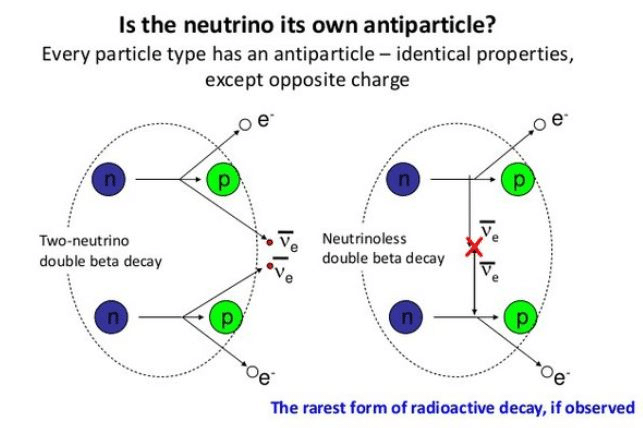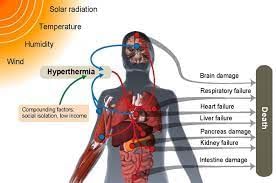UPSC Daily Current Affairs- 27th February 2023 | Current Affairs & Hindu Analysis: Daily, Weekly & Monthly PDF Download
| Table of contents |

|
| GS-I |

|
| GS-II |

|
| What is the law on the Right to be Forgotten? |

|
| GS-III |

|
GS-I
What is Attukal Ponkala?

Why in News?
All arrangements are in place for the Attaukal Ponkala festival, considered one of the world's largest religious gathering of women.
About Attukal Ponkala:
- It is a 10-day long festival celebrated annually at Attukal Bhagavathy Temple in Trivandrum, Kerala.
- This festival is dedicated to Attukal Bhagavathy, also known as Goddess Kannaki or Bhadrakali.
- It is celebrated every year and falls in the month of February or March.
- Pongala, which means 'to boil over’, is the ritual in which women prepare sweet payasam (a pudding made from rice, jaggery, coconut and plantains cooked together) and offer it to the Goddess or ‘Bhagavathy’. This ritual is performed on the 9th day.
- It is one of the largest congregation of women for a festival in the world.
- During the 10-days festivities, a sacrificial offering known as Kuruthitharpanam is also included in the religious event.
Source: The Hindu
Heat Waves and the anatomy behind
Why in News?
The Indian Meteorological Department (IMD) has already started sensing the first signs of heat waves for this summer season.
What is the news?
- The IMD warned that the maximum temperatures over northwest, west, and central India would be 3-5° C higher than the long-term average in this week.
- If the heat waves had played out, they would have been the earliest these regions would have experienced this deadly phenomenon.
What are Heat Waves?
- Heatwaves generally occur over India between March and June.
- IMD declares a heatwave event when the maximum (day) temperature for a location in the plains crosses 40 degrees Celsius.
- Over the hills, the threshold temperature is 30 degrees Celsius.
How are they formed?
- Heatwaves form when high pressure aloft (3,000–7,600 metres) strengthens and remains over a region for several days up to several weeks.
- This is common in summer (in both Northern and Southern Hemispheres) as the jet stream ‘follows the sun’.
- On the equator side of the jet stream, in the upper layers of the atmosphere, is the high pressure area.
- Summertime weather patterns are generally slower to change than in winter. As a result, this upper level high pressure also moves slowly.
- Under high pressure, the air subsides (sinks) toward the surface, warming and drying adiabatically, inhibiting convection and preventing the formation of clouds.
- Reduction of clouds increases shortwave radiation reaching the surface.
- A low pressure at the surface leads to surface wind from lower latitudes that brings warm air, enhancing the warming.
- Alternatively, the surface winds could blow from the hot continental interior towards the coastal zone, leading to heat waves.
Following criteria are used to declare heatwave:
To declare heatwave, the below criteria should be met at least in 2 stations in a Meteorological subdivision for at least two consecutive days and it will be declared on the second day.
(a) Based on Departure from Normal
- Heat Wave: Departure from normal is 4.5°C to 6.4°C
- Severe Heat Wave: Departure from normal is >6.4°C
(b) Based on Actual Maximum Temperature (for plains only)
- Heat Wave: When actual maximum temperature ≥ 45°C
- Severe Heat Wave: When actual maximum temperature ≥47°C
Recent context: El Nino + heat waves
- The last three years have been La Nina years, which has served as a precursor to 2023 likely being an El Nino
- The El Nino is a complementary phenomenon in which warmer water spreads west-east across the equatorial Pacific Ocean.
- As we eagerly await the likely birth of an El Nino this year, we have already had a heat wave occur over northwest India.
- Heat waves tend to be confined to north and northwest India in El Nino years.
Why do heat waves occur in the first place?
- Heat waves are formed for one of two reasons: because warmer air is flowing in from elsewhere or because something is producing it locally.
- Air is warmed locally when the air is warmed by higher land surface temperature or because the air sinking down from above is compressed along the way, producing hot air near the surface.
How do different processes contribute to the formation of a heat wave?
- The direction of air flowing in from the west-northwest, warming in the Middle East, and compression over mountains of Afghanistan and Pakistan cause warm air to enter India.
- The warming Arabian Sea also contributes to the warming trend.
- Upper atmospheric westerly winds control near-surface winds, which rotate faster than the planet itself.
- Additionally, the lapse rate, or the rate at which temperatures cool from surface to upper atmosphere, is declining due to global warming.
Regional occurrences
- The other factors that affect the formation of heat waves are the age of the air mass and how far it has traveled.
- The north-northwestern heatwaves are typically formed with air masses that come from 800-1,600 km away and are around two days old.
- Heat waves over peninsular India on the other hand arrive from the oceans, which are closer (around 200-400 km) and are barely a day old.
- As a result, they are on average less intense.
Source: Indian Express
GS-II
Banjara Community

Why in News?
Recently, the Union government of India kicked-off year-long celebrations to mark the 284th birth anniversary of Santh Sevalal Maharaj, a spiritual and religious leader of the Banjara community.
About Banjara Community:
- Banjara is made of various groups found throughout India and most of them are found in Telangana, Andhra Pradesh and Karnataka states in South India.
- This community settled across the country with different names, have permanently abandoned their nomadic lifestyle and settled in their settlements called Tandas.
- They speak Gor Boli also called Lambadi which belongs to the Indo-Aryan Group of Languages. Lambadi has no script.
- Banjara people celebrate the festival of Teej during Shravanam (in the month of august). In this festival young unmarried Banjara girls pray for a good groom.
- Fire dance and Chari are the traditional dance forms of the banjara people.
Who is Santh Sevalal Maharaj?
- He is considered a social reformer and spiritual teacher of the Banjara community.
- He travelled across the country with his Ladeniya Troup to serve especially the forest dwellers and nomadic tribes.
- Due to his extraordinary knowledge, excellent skills and spiritual background in Ayurveda and Naturopathy, he was able to dispel and eradicate myths and superstitions prevalent in the tribal communities.
Source: The Hindu
What is the ‘Right to be Forgotten’?

Why in News?
A doctor has requested the Delhi High Court to enforce his ‘Right to Be Forgotten,’ which includes removing news articles and other content related to his “wrongful arrest.”
What is the “Right to Be Forgotten” Law?
- The “Right to Be Forgotten” law is a legal concept that allows individuals to request the removal of their personal information from the internet.
- It is based on the idea that individuals have a right to privacy and control over their personal data.
- The law has been implemented in various forms in different countries, including the European Union, Argentina, and South Korea.
What are the origins of this Right?
- The Right to be Forgotten was first established by the European Court of Justice in 2014 in the case of “Google Spain SL, Google Inc v Agencia Española de Protección de Datos, Mario Costeja González”.
- The case was about a Spanish man who wanted to remove a 1998 advertisement about his home being repossessed.
- The Right to be Forgotten was later included in the EU’s General Data Protection Regulation (GDPR), along with the right to erasure.
- Article 17 of the GDPR outlines the right to erasure and provides certain conditions when the right can be restricted.
How does it work?
- The “Right to Be Forgotten” law allows individuals to request the removal of their personal information from search engine results, social media platforms, and other websites.
- The request must be made to the data controller, who is responsible for managing the personal data.
- The data controller then evaluates the request and decides whether to remove the information or not.
- If the request is denied, the individual can appeal the decision to the relevant regulatory authority.
Criticisms of the law
- Critics argue that the law undermines freedom of expression and the public’s right to access information.
- They also claim that the law is difficult to enforce and can lead to the censorship of legitimate information.
- Others argue that the law is too narrow in scope and does not provide adequate protection for individuals’ privacy.
Future of the law
- The “Right to Be Forgotten” law is still a relatively new legal concept, and its future is uncertain.
- It is likely that the law will continue to evolve as courts and regulators grapple with its complexities.
- In the meantime, individuals should be aware of their rights and take steps to protect their personal data online.
What is the law on the Right to be Forgotten?
- Section 43A of the IT Act, 2000 says that organizations who possess sensitive personal data and fail to maintain appropriate security to safeguard such data, resulting in wrongful loss or wrongful gain to anyone, may be obligated to pay damages to the affected person.
- IT Rules, 2021 do not include this right, they do however, lay down the procedure for filing complaints with the designated Grievance Officer so as to have content exposing personal information about a complainant removed from the internet.
Judicial precursor to the issue
- The Right to be Forgotten is not explicitly recognized by Indian law, but it has been considered part of an individual’s Right to Privacy under Article 21 by Indian courts since the 2017 ruling in “K.S.Puttaswamy vs Union of India“.
- The court acknowledged that this right may be restricted by the right to freedom of expression and information or legal obligations.
- In 2021, the Delhi High Court directed online platforms to remove publicly available records of a case against an American citizen under the Narcotics Drugs and Psychotropic Substances Act, 1985, who argued that it was affecting his employment prospects.
Source: The Hindu
GS-III
Upgrades in the ALMA Telescope
Why in News?
The Atacama Large Millimetre/submillimetre Array (ALMA) — a radio telescope in the Atacama Desert of northern Chile is set to get software and hardware upgrades.
What is ALMA?
- ALMA is a state-of-the-art telescope that studies celestial objects at millimetre and submillimetre wavelengths which can penetrate through dust clouds.
- It helps astronomers examine dim and distant galaxies and stars out there.
- It also has extraordinary sensitivity, which allows it to detect even extremely faint radio signals.
- The telescope consists of 66 high-precision antennas, spread over a distance of up to 16 km.
- Each antenna is outfitted with a series of receivers, and each receiver is tuned to a specific range of wavelengths on the electromagnetic spectrum.
Who operates ALMA?
- ALMA is operated under a partnership among the United States, 16 countries in Europe, Canada, Japan, South Korea, Taiwan, and Chile.
- Fully functional since 2013, the radio telescope was designed, planned and constructed by US, Japan and EU.
Why is ALMA located in Chile’s Atacama Desert?
- ALMA is situated at an altitude of 16,570 feet (5,050 metres) above sea level on the Chajnantor plateau in Chile’s Atacama Desert.
- The high altitude and low humidity of the site make it an ideal location for a radio telescope, as there is minimal atmospheric interference.
- Moreover, the desert is the driest place in the world, meaning most of the nights here are clear of clouds and free of light-distorting moisture — making it a perfect location for examining the universe.
Significant discoveries
- One of the earliest findings came in 2013 when it discovered starburst galaxies earlier in the universe’s history than they were previously thought to have existed.
- These newly discovered galaxies represent what today’s most massive galaxies looked like in their energetic, star-forming youth.
- In 2015, the telescope helped scientists observe a phenomenon known as the Einstein ring, which occurs when light from a galaxy or star passes by a massive object en route to the Earth, in extraordinary detail.
Source: Indian Express
Malabar Tree toad

Why in News?
Malabar tree toad found in Mollem National Park which is threatened by three infrastructure project finds mentioned in the updated ‘Checklist of Indian Amphibians (2023)’ released by the Zoological Survey of India.
About Malabar tree toad:
- The Malabar tree toad is a small species found in the forest along the Western Ghats in wet tree hollows or leaf bases containing water.
- This toad species is found mainly during the monsoon season and then it disappears.
- It is believed to be the only toad to dwell on high canopies.
- Its population is shrinking mainly due to habitat loss, climate change and Batrachochytrium dendrobatidis, a deadly fungus that has been decimating entire amphibian populations worldwide.
- Conservation status
- IUCN: Endangered
Key facts about the Mollem National Park
- It is located in Sanguem taluk in Goa close to the border with Karnataka.
- This park also has several temples dating back to the Kadamba Dynasty.
- The park was earlier known as Mollem game sanctuary.
- It was declared a wildlife sanctuary in 1969 and renamed Bhagwan Mahaveer Sanctuary.
- Since then, the national park is called Bhagwan Mahaveer Sanctuary and Mollem National Park.
- Fauna: King Cobra, Hump-nosed pit viper, Indian rock python and Malabar pit viper are found in the park.
Source: Times of India
What is the Pink Bollworm?

Why in News?
The Genetic Engineering Appraisal Committee (GEAC) recently approved confined field trials for Pink Bollworm-resistant GM cotton in Hisar, Haryana
About Pink Bollworm:
- It is one of the most destructive pests of cotton.
- Scientific name: Pectinophora gossypiella
- Distribution: Originally native to India, it is now recorded in nearly all the cotton-growing countries of the world.
- Description:
- The adults are small moths about 3/8 inch long and are dark brown with markings on the fore wing.
- The larval stage is the destructive and identifiable stage.
- The larvae have distinctive pink bands and can reach a length of ½ inches right before they pupate.
- Ecological Threat:
- Pink bollworms are major pests of cotton.
- Adults only last for 2 weeks, but females will lay 200 or more eggs.
- Adults lay eggs on cotton bolls; once hatched, the larvae eat the seeds and damage the fibers of the cotton, reducing the yield and quality
- When the larvae mature, they cut out the boll and drop to the ground and cocoon near the soil surface.
- It has also been observed to attack hibiscus, okra, and hollyhock plants.
Source: PIB
Are neutrinos their own anti-particles?

Why in News?
The article discusses recent research on the idea that neutrinos might be their own antiparticles, a concept that has been debated in the scientific community for many years.
What are neutrinos?
- Neutrinos are fundamental particles that are similar to electrons but have no electric charge.
- They are one of the most abundant particles in the universe, but they are also one of the most difficult to detect because they interact only very weakly with matter.
- Neutrinos are created in a variety of natural processes, including nuclear reactions in stars, radioactive decay, and cosmic ray interactions.
- They are also produced in particle accelerators and nuclear reactors.
Its types
Neutrinos come in three different types or “flavors”:
- Electron neutrinos
- Muon neutrinos, and
- Tau neutrinos
- Each flavor of neutrino is associated with a different charged lepton (electron, muon, or tau).
Why study neutrinos?
- Because they are electrically neutral and interact only weakly with matter, neutrinos can pass through enormous amounts of material without being stopped or deflected.
- This property makes them useful for studying astrophysical phenomena such as supernovae and the sun’s interior, as well as for exploring the fundamental nature of matter.
Neutrinos as their own antiparticles
- Particle physics explains that particles and their antiparticles have opposite properties, and they can annihilate each other when they meet.
- Neutrinos are fundamental particles that are difficult to detect as they have no electric charge and interact only weakly with matter.
- The idea that neutrinos could be their own antiparticles is supported by the fact that they are electrically neutral, and they could interact with themselves in a process called neutrinoless double beta decay.
Substantiation of this
- The Majorana Demonstrator experiment is designed to detect neutrinoless double beta decay.
- The experiment has reported some promising results that suggest that neutrinos could indeed be their own antiparticles.
Significance of this theory
- If confirmed, the idea that neutrinos are their own antiparticles could have important implications for our understanding of the fundamental nature of matter and the universe as a whole.
- More research will be needed before any definitive conclusions can be drawn, but the results of the Majorana Demonstrator experiment provide some promising evidence for the idea that neutrinos are their own antiparticles.
Source: Indian Express
|
38 videos|5293 docs|1118 tests
|
FAQs on UPSC Daily Current Affairs- 27th February 2023 - Current Affairs & Hindu Analysis: Daily, Weekly & Monthly
| 1. What is the significance of GS-I, GS-II, and GS-III in the UPSC exam? |  |
| 2. What are the key features of the UPSC Daily Current Affairs? |  |
| 3. How can UPSC Daily Current Affairs help in UPSC preparation? |  |
| 4. Are the frequently asked questions in the UPSC exam related to the current affairs? |  |
| 5. How can I effectively prepare for the GS-I, GS-II, and GS-III papers in the UPSC exam? |  |

















